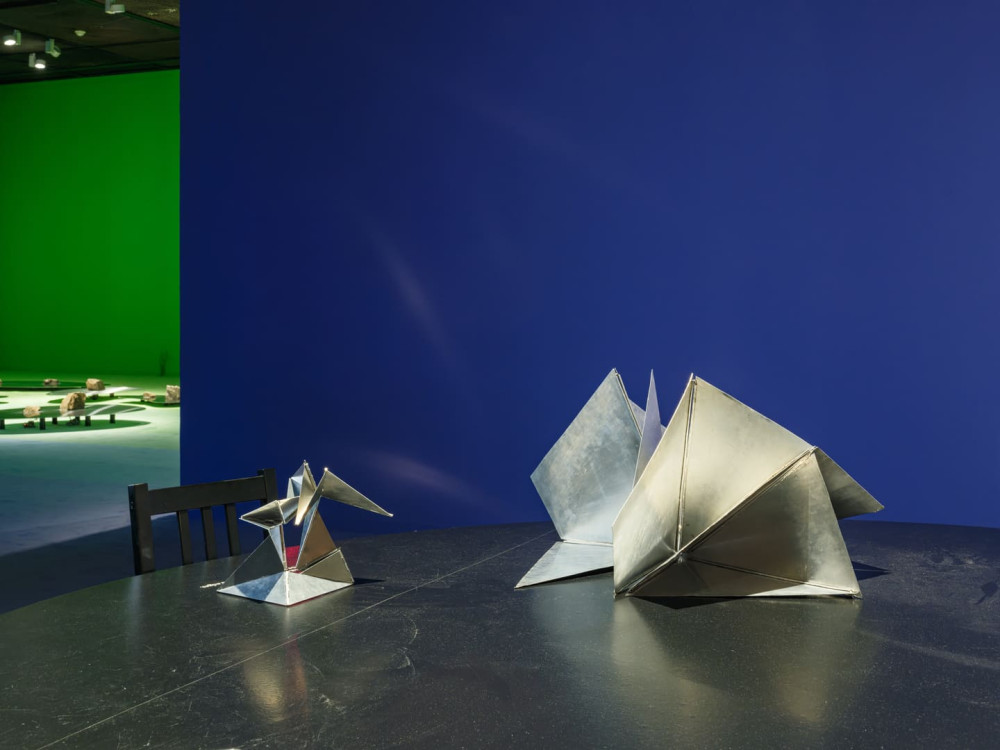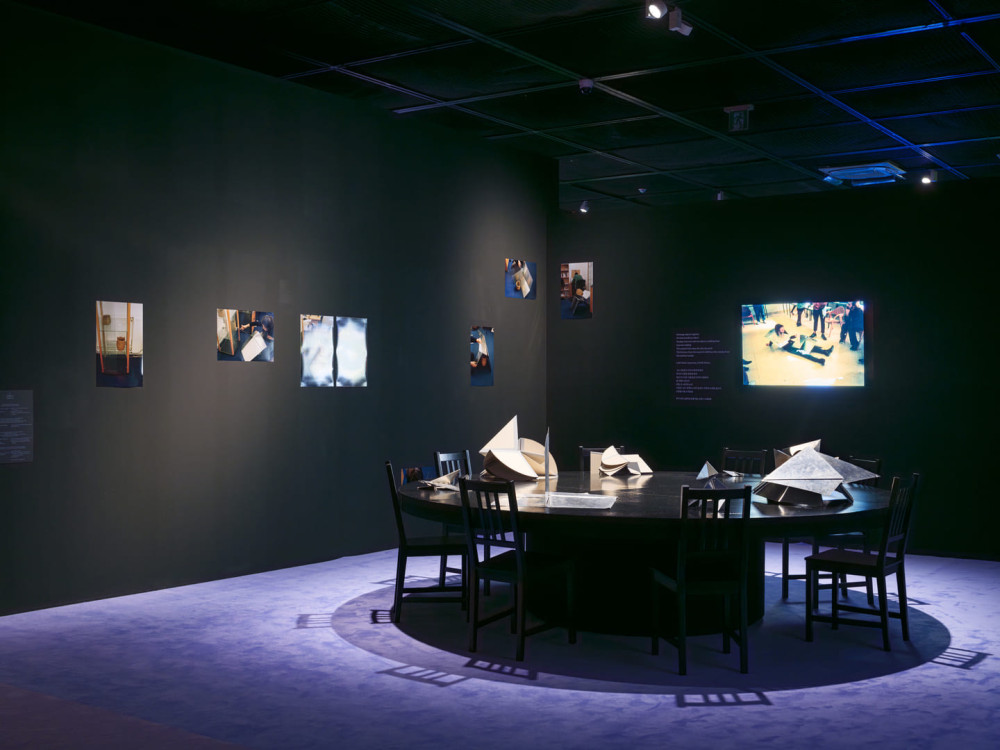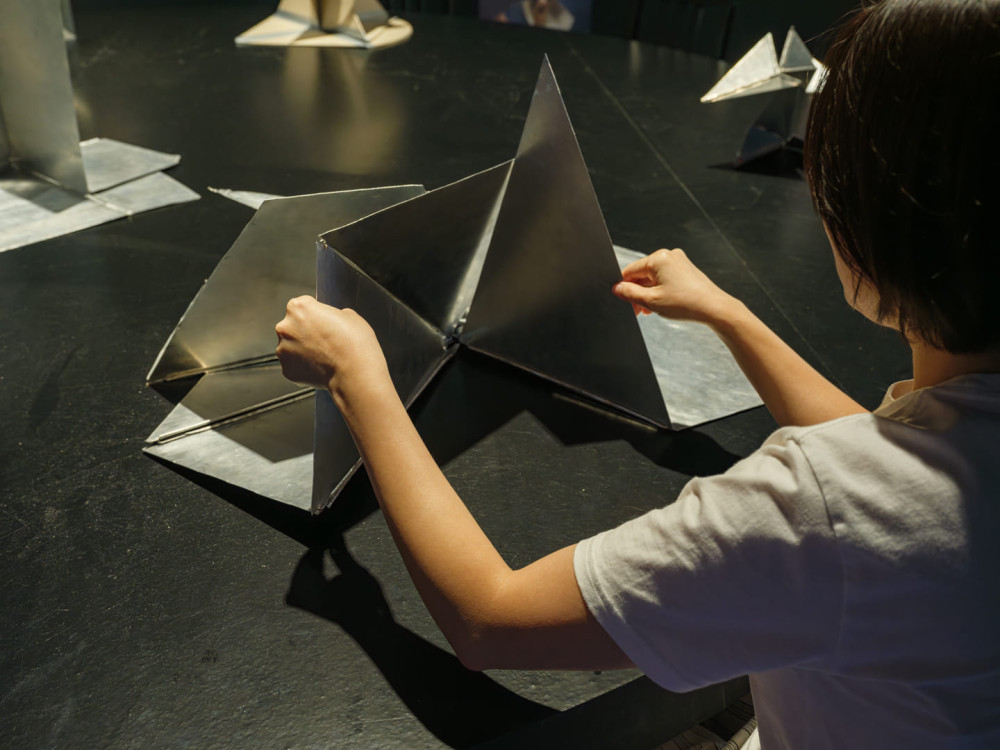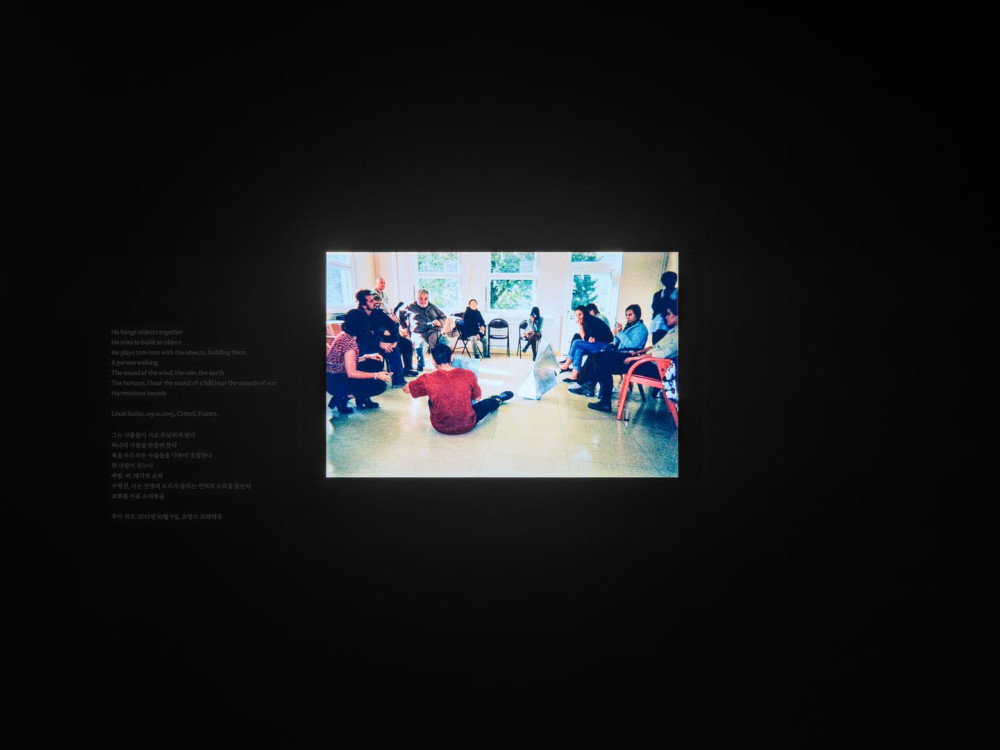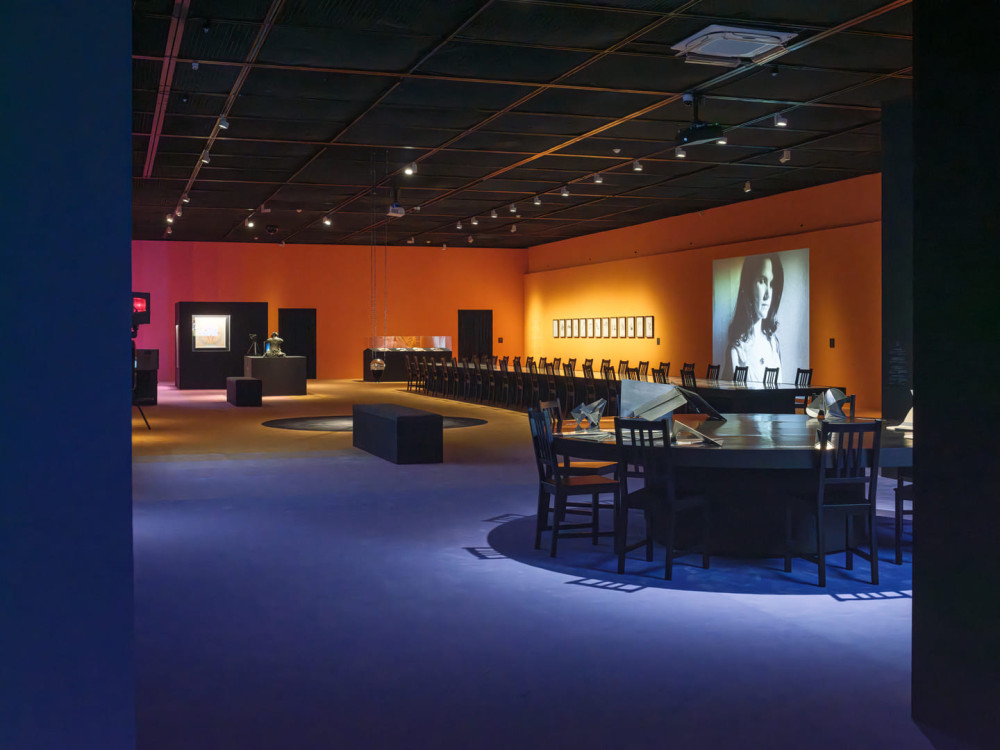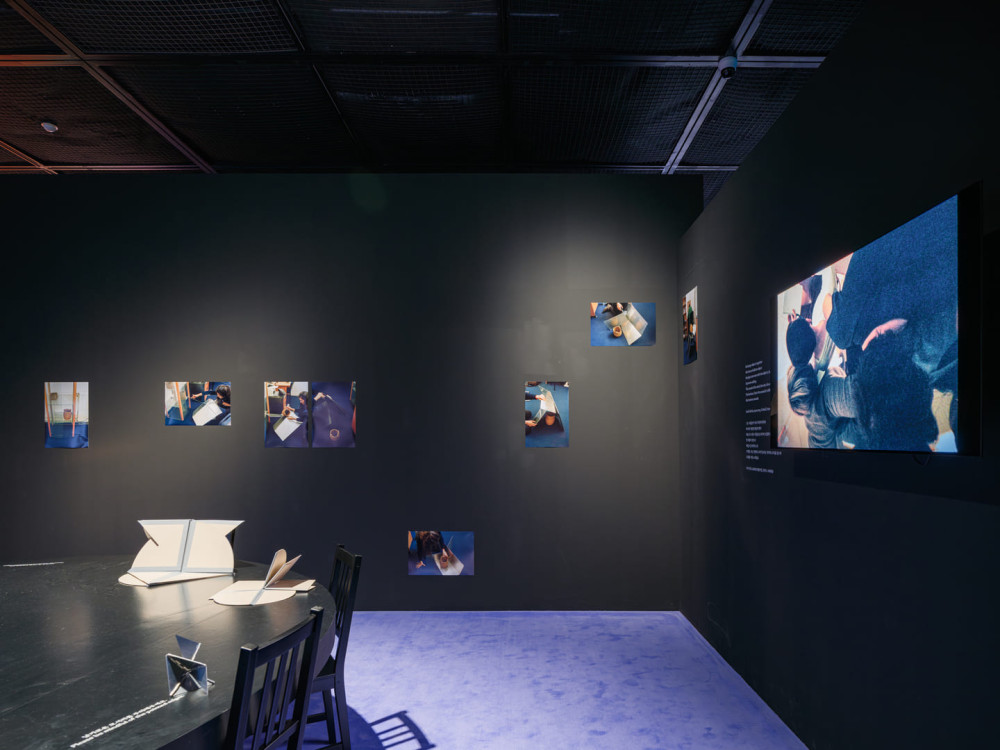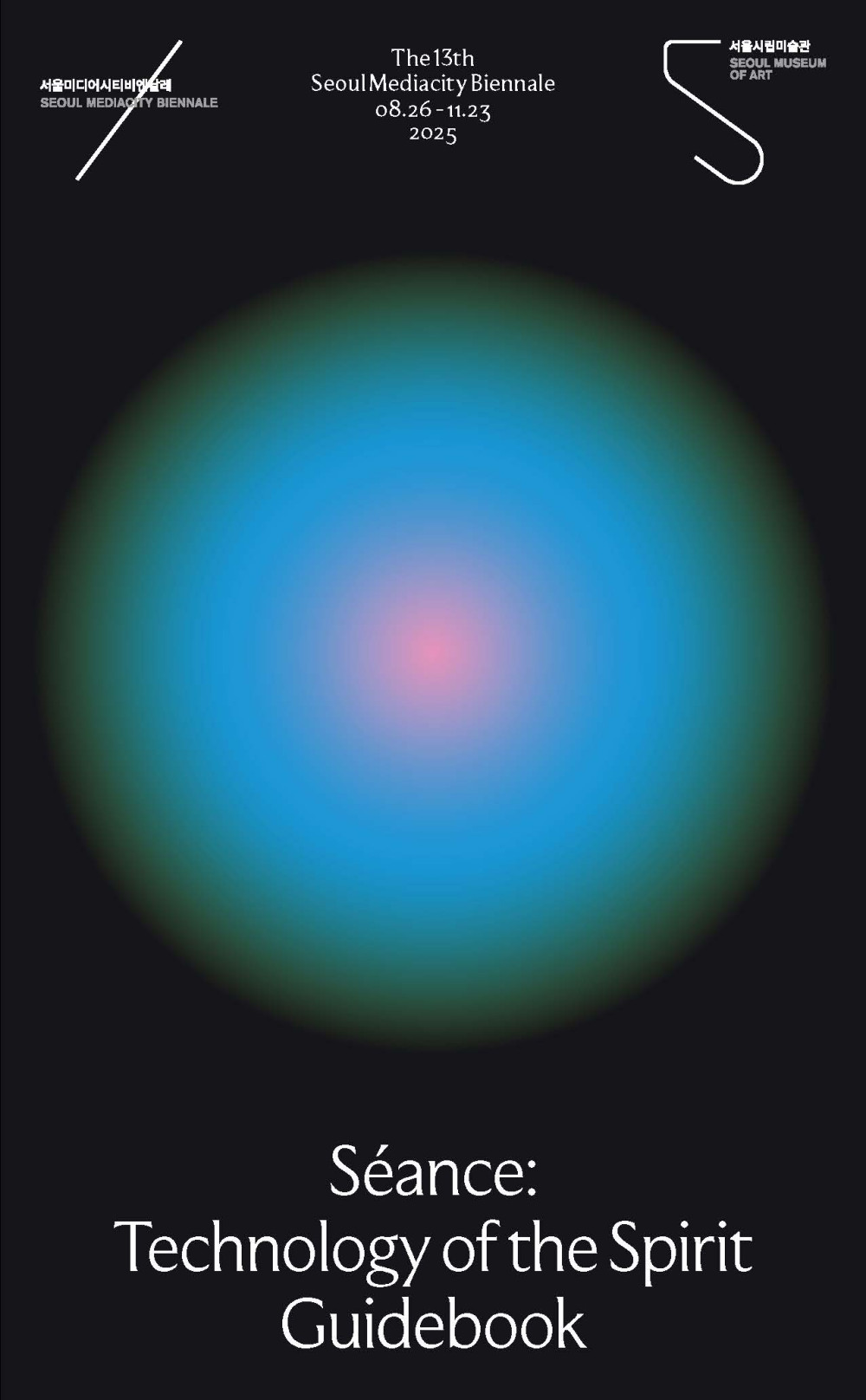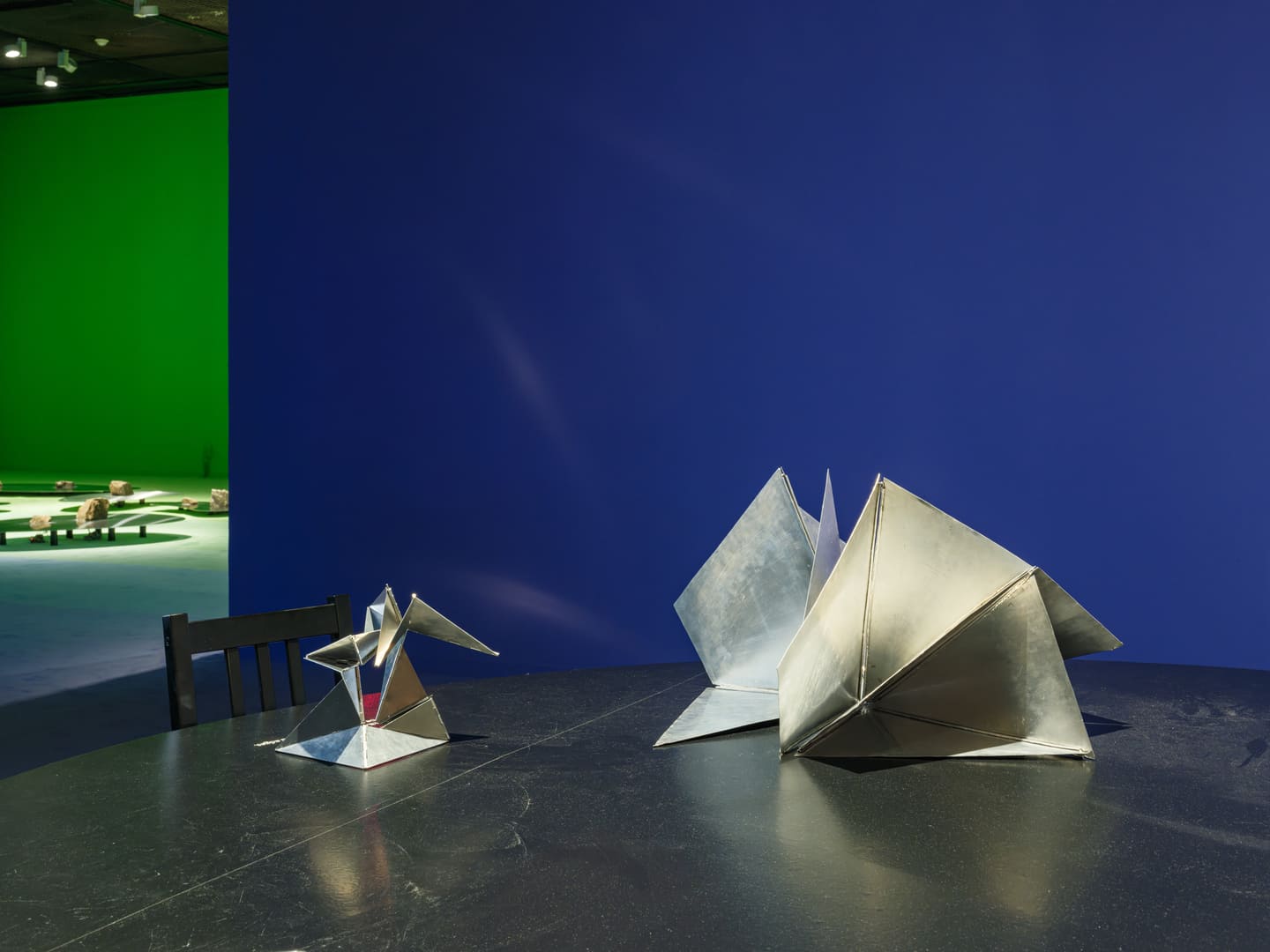
In the early 1960s, the artist Lygia Clark created a series of sculptures constituted of interlocking aluminum planes that can be manipulated into different forms. She named them Bichos (“critters”), suggesting an association with living, animated, articulated beings. In 2014, Violett e a started making copies of these works, calling them “confidential replicas.” These copies are intended to be handled, allowing the public to replicate the dialogue with the material that Clark intended for her originals (which can now only be touched under strict conditions, in order to conserve them).
Violett e a has used these “confidential replicas” in a clinical psychiatric context (among others), resonating with Clark’s own work in sensorial therapy and continuing a long tradition of embodied, participatory healing at the margins of contemporary art. By remaking Clark’s Bichos, these works are not homages so much as invocations, summoning presence through the manipulation of material. The folding, unfolding, and re-folding becomes a meditative gesture, a trance of the hands, where the boundary between original and copy, self and other, begins to blur. Like a medium, Violett e a calls forth what is absent.
Violett e a, The Moon’s dwelling place is rectangular, 2016–2018. 8 c-prints. 53 × 35.3 cm (5 pieces), 35.3 × 53 cm (3 pieces) each. Photographs by Florian Fouché. Reproduction supported by The 13th Seoul Mediacity Biennale
Violett e a, Confidential Replicas of Lygia Clark’s Bichos—Bicho Flower, Bicho Monument to all situations, Bicho Machine (cardboard), Bicho Pancubism (cardboard), 2014–2025. 4 sculptures in metal and cardboard. dimensions variable
Violett e a, Confidential Replicas of Lygia Clark’s Bichos—Bicho Crab, Bicho Space Bird, Bicho Reverse 2, Bicho Fantastic Arquitecture, 2014–2025. 4 sculptures in metal and cardboard. dimensions variable. Reproduction: Artlab ban (Jo Jaehong, Koo jaehoi). Reproduction supported by The 13th Seoul Mediacity Biennale
Violett e a, “Bichos session” 09.10.2015: an art workshop at Albert Chenevier Hospital, 2015/2025. video. 5 min. Editing: Violett e a. Photographs by Urbain Gonzalez, Oswald Reich, Louis Sucko, Sylvie Tran, and other participants of the workshop
